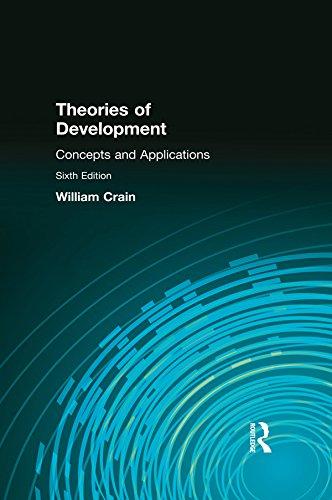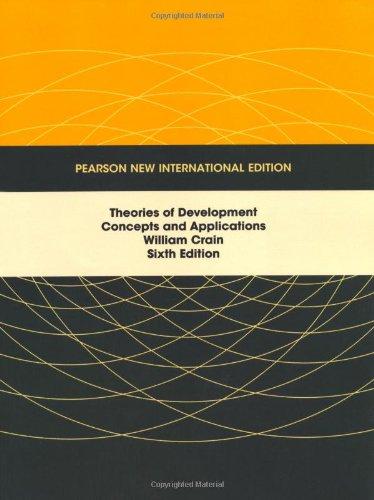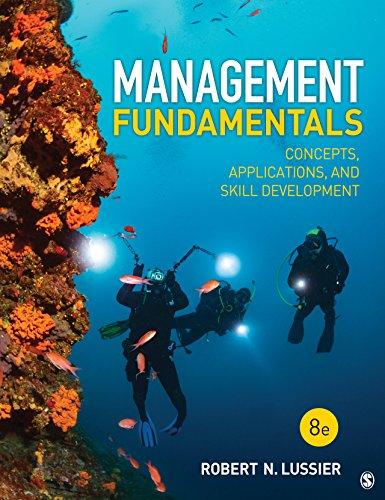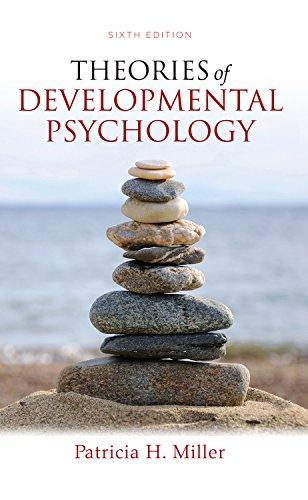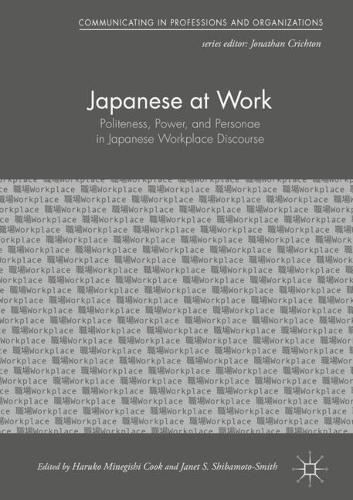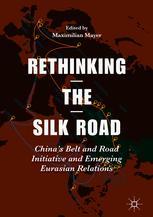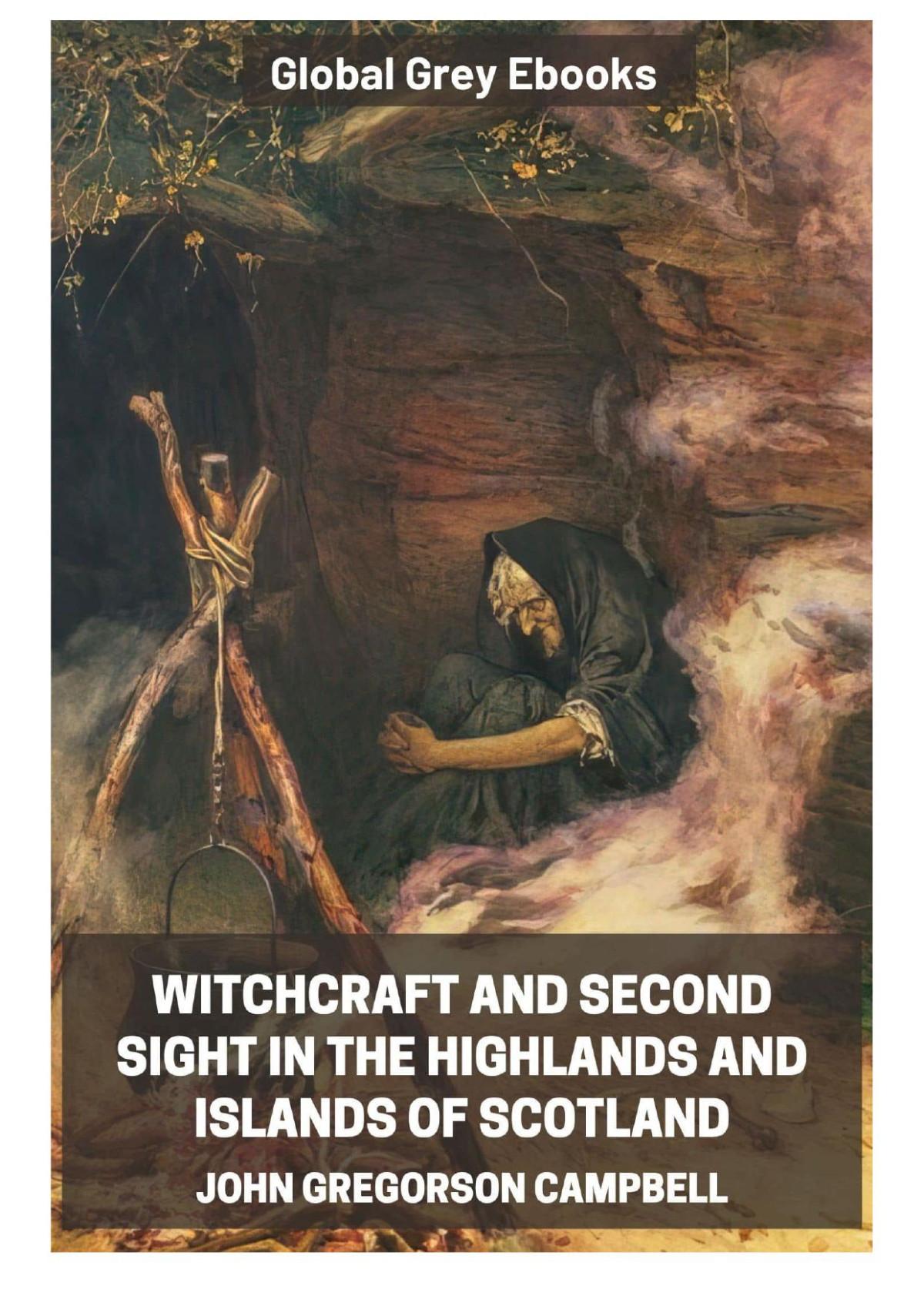PREFACE
This sixth edition of Theories of Development is fundamentally similar to the earlier editions. Its purpose, once again, is to introduce students to a variety of theorists, giving special attention to those who have contributed to that distinctly developmental perspective that began with Rousseau. The book focuses, that is, on writers who help us understand how development might arise from our inner promptings and spontaneous interests and how we might view the world differently at various stages of life.
This new edition updates several chapters. I have most substantially revised Chapter 3on ethology—a revision that reflects my growing conviction that the study of other species casts considerable light on human development. In addition, several chapters give greater attention to children’s play. At a time when education policymakers are so willing to sacrifice children’s free, creative play for the sake of higher test scores, it’s important to see how great developmental theorists recognized the value of play.
Th e updated Instructor’s Manual, which includes test questions, is available for download from the Instructor’s Resource Center at
Over the years, many people have contributed to this book. I offer special thanks to my wife Ellen. As always, she provided unwavering support and valuable insight. I also am deeply indebted to our children, Adam, Tom, and Sally. It was initially by watching them that I became so impressed by the growth process that I decided to write this book about it. Our children are grown now, but they continue to offer support and ideas that mean a great deal to me.
This new edition has benefited from critical readings and suggestions by Jonathan Lang, Borough of Manhattan Community College; Robert Markowitz, University of West Florida; Stephanie Shine, Texas Tech University; Deborah Thomas, Washington State Community College; and Sandra Triebenbacher, East Carolina University.
I am grateful, finally, to those who have given permission to quote from various sources:
•The first stanza of Emily Dickinson's poem, “Growth of Man like Growth of Nature,” appears on page xv and is reprinted by permission of the publishers and the Trustees of Amherst College from The Poems of Emily Dickinson, Thomas H. Johnson, ed., Cambridge, Mass.: The Belknap Press of Harvard University Press. Copyright © 1951, 1955, 1979, 1983 by the President and Fellows of Harvard College.
•Carol Haber granted permission to reprint in Chapter 2 excerpts from Louise B. Ames, “Don’t Push Your Preschooler,” Family Circle Magazine, December, 1971.
•Holistic Education Press gave permission to reproduce in Chapter 3 material from my article, “Is Children’s Play Innate?” which appears in the Summer 2010 issue of Encounter:Education for Meaning and Social Justice.
•Excerpts in Chapter 12 are taken from Childhood and Society by Erik H. Erikson. Copyright © 1950 © 1963 by W.W. Norton & Company, Inc., renewed © 1978, 1991 by Erik H. Erikson. Used by Permission of W.W. Norton & Company, Inc.
•Excerpts in Chapter 13 were reprinted and edited with the permission of The Free Press, a Division of Simon & Schuster, Inc., from The Empty Fortress: Infantile Autism and the Birth of the Self by Bruno Bettleheim. Copyright © 1967 by Bruno Bettelheim. Copyright renewed © 1995 by Ruth Bettelheim, Naomi Pena, Eric Bettelheim. All rights reserved.
•Henry Holt and Company granted permission to reproduce lines from my 2003 book, Reclaiming Childhood. This material appears in the Epilogue.
Credit for the use of illustrations and other material is given within the text.
William Crain
Growth of Man like growth Of Nature
Gravitates within, Atmosphere and sun confirm it
But it stirs alone.
Emily Dickinson
This page intentionally left blank
developmental theorists think, children have an inner need to seek out certain kinds of experiences and activities at certain times in life.
The writers in the developmental tradition do not agree on every point, and they have studied different aspects of people’s lives. Nevertheless, they share a fundamental orientation, which includes this interest in inner growth and spontaneous learning.
The developmentalists’ concerns have been practical as well as theoretical. Montessori, for example, became dissatisfied with the standard educational method, whereby teachers try to direct children’s learning by rewarding their correct answers and criticizing their mistakes. This practice, Montessori thought, undermines children’s independence, for children soon turn to the teacher, an external authority, to see if they are right. Instead, she tried to show that if we observe children’s spontaneous interests, we can provide tasks on which they will work independently and with the greatest concentration, without external direction or motivation. For, she thought, an inner force prompts children to perfect their capacities at each developmental stage.
In many other ways, writers with a strong developmental orientation have contributed to a new understanding of childhood and the years that follow. Unfortunately, however, their writings have not received the full consideration they deserve. Their emphasis on spontaneous development has often struck psychologists as too romantic or too radical. Piaget, to be sure, has found a wide audience, but often a very skeptical one.
There is one place where the developmentalists’ concerns are seriously expressed. This is in humanistic psychology. Maslow and the humanists have drawn heavily upon developmental ideas. But the humanists have usually done this in a very implicit way, without recognizing how much they owe to earlier developmental contributions.
This book, then, is devoted to an appreciation of some of the outstanding developmental theorists. We will discuss the theorists who have followed closely in the footsteps of Rousseau, along with other theorists, including ethologists and psychoanalysts, who share a developmental outlook. We will discuss their concepts and some of the practical implications of their work. We will also review the first orientation I mentioned—that of the learning theorists, who help us understand behavior from a more environmental perspective. We will not cover learning theory in the depth it deserves, for this book is primarily concerned with the developmental tradition. But we will try to get a flavor of the learning theorists’ ideas. In the chapter on Vygotsky, in addition, we will look at a pioneering attempt to integrate strong developmental and environmental perspectives. In the conclusion, we will discuss the ways in which developmental theorists have anticipated and advanced humanistic ideas and insights.
Early Theories: Preformationism, Locke, and Rousseau
The two great pioneers in child psychology were John Locke and Jean-Jacques Rousseau. Locke was the father of environmentalism and learning theory; his heirs are scientists such as Ivan Pavlov and B. F. Skinner. Rousseau began the developmental tradition in psychology; his followers include Arnold Gesell, Maria Montessori, Heinz Werner, and Jean Piaget. Both Locke and Rousseau made radical departures from an earlier outlook called preformationism.
PREFORMATIONISM
For centuries, people seem to have looked on children as fully formed miniature adults. The French historian Philippe Ariès (1914–1984) described how this view was predominant during the Middle Ages. Medieval paintings and sculptures, for example, routinely portrayed children—even newborns—with adult body proportions and facial characteristics. The children were distinguished only by their size. It was as if the children had arrived preformed in the adult mold (Ariès, 1960, pp. 33–34).
In medieval social life, too, Ariès argued, children were treated like adults. When they were 6 or 7 years old, they were typically sent off to other villages to begin working as apprentices. They learned carpentry, farming, domestic service, weaving, and other crafts and trades on the job. The child lived as a boarder in a master’s house and often worked alongside other apprentices who were much older than he or she. No one paid much attention to the child’s age, for the child had basically entered adult society. The child wore the same clothes, played the same games, and participated in the same festivals as the grownups
(Ariès, 1960, pp. 71–72, 411). “Wherever people worked,” Ariès said, “and also wherever they amused themselves, even in the taverns of ill repute, children mingled with the adults” (p. 368).
Ariès acknowledged that younger children—before the age of 6 or 7— were treated differently. People recognized their need for protection and care. But on the whole, Ariès suggested, people were indifferent to children’s special characteristics. No one bothered to study, for example, the infant’s developing speech or motor development; and when artists included children in their paintings, they depicted even newborns as miniature adults.
Some historians have challenged Ariès’s views. Because medieval written documents are sparse, it’s difficult to evaluate all the disagreements, but historians such as Barbara Hanawalt (1986) and Shulamith Shahar (1990) have gathered enough evidence to indicate that Ariès was sometimes prone to overstatement. It appears that apprenticeships, while common, were not as universal as Ariès claimed, and that 6- and 7-year-olds sometimes entered the adult workplace more gradually than Ariès implied. Still, by the age of 12 or so, most children were carrying out adult responsibilities, and I believe that Ariès’s critics have done more to qualify Ariès’s accounts than to refute them.
Moreover, other sources have shown that the image of children that Ariès highlighted—that of the child as a little adult—has been prevalent throughout the ages. This image is perhaps most evident in preformationistic theories in embryology. For centuries, many scientists believed that a tiny, fully formed human, or homunculus, is implanted in the sperm or the egg at conception (see Figure1.1). They believed that the human is “preformed” at the instant
FIGURE 1.1
Drawing by Hartsoeker (1694) of a fully formed human in the sperm.
(Reprinted in Needham, 1959, p. 206.)
of conception and only grows in size and bulk until birth. Preformationism in embryology dates back at least to the fifth century B . C . E .and is found in scientific thinking throughout the ages. As late as the 18th century, most scientists held preformationist views. They admitted that they had no direct evidence for a fully formed homunculus, but they argued that this was only because it is transparent or too small to see (Balinsky, 1981, p. 11; Needham, 1959, pp. 34–35, 91, 213–222).
As we look back on the “little adult” views of the past, it’s easy to regard them as quaint and antiquated. But we often lapse into the same thinking today, as when we expect young children to be able to sit as still as we can in social settings, or when we assume that their thinking is the same as ours. For example, I was recently standing in a supermarket checkout line and heard a mother next to me upbraid her toddler for having put several items that he liked into the shopping cart: “You know I can’t afford those things,” the mother said, as if the toddler had an adult knowledge of grocery budgets. We are vulnerable to an adult egocentrism and assume that even young children think as we do, even if our attitude isn’t as dominant as it once was (Ausubel, 1958, p. 24).
In embryology, preformationism gave way during the 18th century, when microscopic investigations showed that the embryo developed in a gradual, sequential manner. In European social thought, preformationism began to decline earlier, in the 16th century, accompanying changes in the occupational world.
During the Middle Ages, most of the occupations—such as farming, carpentry, domestic service, metal work, and weaving—required skill, but the adults believed that 6- and 7-year-olds could begin learning them on the job. Children, therefore, were able to mix in with adults. After 1500 or so, the occupational world showed clear signs of change. With the invention of the printing press, the growth of commerce and market economies, and the rise of cities and nation-states, the occupational world began to take on a “whitecollar” look. New opportunities arose for merchants, lawyers, bankers, journalists, and government officials—occupations that required reading, writing, and math. The members of a rising middle class saw that they could advance their families’ fortunes by providing their children with the academic instruction that these new occupations required. This new demand for education sparked a tremendous growth of schools in 16th- and 17th-century Europe (Crain, 1993).
The upshot was that growing numbers of parents (especially in the middle class) were no longer willing to send their children off to work at the age of 6 or 7 years. Parents wanted their children to go to school first. Parents began keeping their children in school at least until they were 12 years old, and often until they were well into their teens. Thus the growth of schools gave the child a new status. The child was no longer someone who was ready for the adult world, but someone who had to be kept apart from it while undergoing
an extensive education. The child was seen less as a little adult and more as a future adult (Ariès, 1960, pp. 329, 412).
LOCKE’S ENVIRONMENTALISM
Biographical Introduction
As the rising middle class pursued new opportunities, it challenged the traditional feudal order. The middle class no longer accepted a society in which everyone’s place was predetermined by birth. It sought a brighter future, pinning great hopes on education to bring it about. In so doing, it helped usher in the modern way of life.
But the feudal regime wasn’t about to just hand over its authority. It imposed economic regulations and waged an ideological war. It accused the new middle class—the bourgeoisie—of selfishly abandoning loyalty, honor, and the old ways.
In these battles, those seeking change drew inspiration from the intellectuals of the 18th-century Enlightenment, such as Denis Diderot and Nicolas de Condorcet. These writers argued that if people could rid themselves of the authoritarian state and church, people could live freely and democratically, and science, technology, and education would produce great progress for all. These writers, in turn, drew heavily on the late-17th-century theories of the British philosopher John Locke (1632–1704).
Writing in language that was refreshingly clear and sensible, Locke rejected the widespread belief that there are vast, innate differences among people. Instead, Locke argued, people are largely shaped by their social environments, especially by their education. Locke then showed how this happens and how education could be improved. To many Enlightenment thinkers, Locke’s writings were full of wonderful possibilities. If one could change people’s environments and education, one could produce an egalitarian, democratic society (Gay, 1969, pp. 511–516).
Locke was born in the village of Somerset, England. His father, a small landowner, was the first to instill in him a belief in democracy. Locke attended the Westminster School and Oxford University, but found both plagued by the pedantic lessons so prevalent in his day. Although he seems to have been a rather shy boy, he frequently became so bored and restless in class that he preferred to talk to his classmates rather than pay attention to the instructor (Pheardon, 1952, p. vii; Quick, 1880, p. xx; Sahakian & Sahakian, 1975).
Still, Locke did well enough at Oxford to gain appointments at the university tutoring Greek and moral philosophy. For a while, Locke had trouble deciding on his future. Adevout Christian, he thought he might become ordained in the Church of England, but he decided to study medicine instead,
primarily so he could learn about the natural sciences. He assisted a noteworthy chemist, Robert Boyle, and was deeply impressed by the scientific method and its reliance on empirical evidence. As a physician, Locke successfully treated Lord Ashley, later the Earl of Shaftesbury; became Shaftesbury’s friend and personal secretary; and also tutored his grandson. His association with Shaftesbury, however, eventually proved troublesome. When Shaftesbury was imprisoned for criticizing the king, Locke was forced to flee England and find asylum in Holland. There, Locke wrote a series of letters to his friend Edward Clark, offering advice on the upbringing of Clark’s son. These letters inspired Locke’s most important work on education, Some Thoughts Concerning Education (1693). After the successful Revolution of 1688, Locke returned to England and saw the publication of two other great books. The first was his Essay Concerning Human Understanding (1690), which established him as the father of empiricism in philosophy and learning theory in psychology. His other great book was Two Treatises on Government (1689), which set forth many of the central ideas in the U.S. Constitution (Lamprecht, 1928; Russell, 1945).
Locke’s View of Development
The starting point of Locke’s theory was his refutation of the doctrine of innate ideas. Prior to Locke, many philosophers held that some ideas, such as mathematical truths and beliefs in God, are innate, existing in the mind prior to experience. Locke argued that observations of children will show that these ideas are not present from the beginning and that they are learned. He said it is more accurate to think of the child’s mind as a blank slate, and whatever comes into the mind comes from the environment. We might consider
the mind to be, as we say, white paper void of all characteristics, without any ideas. How comes it to be furnished?...Whence has it all the materials of reason and knowledge? To this I answer, in one word, from experience; in that all our knowledge is founded, and from that it ultimately derives itself. (1690, vol. 1, bk. 2, sec. 2, emphasis in original)
Locke did qualify this statement a bit. He noted that although most of a person’s knowledge comes from the environment, a person also can learn, in time, by reflecting on his or her own thinking and beliefs (1690, vol. 1, bk. 2, chap. 1). Locke also acknowledged that there are some innate differences among individuals (1693, sec. 1).
But on the whole, Locke said, it’s the environment that molds the mind. And the environment’s influence, Locke emphasized, is especially powerful in the child’s early years. This is when the child’s mind is most pliable, when
we can mold it as we wish. And once we do so, its basic nature is set for life (1693, secs. 1, 32).
Precisely how does the environment exert its effects? First, many of our thoughts and feelings develop through associations. Two ideas regularly occur together, so we cannot think of one without simultaneously thinking of the other. For example, if a child has had bad experiences in a particular room, the child cannot enter it without automatically experiencing a negative feeling (Locke, 1690, vol. 1, bk. 2, chap.33, sec. 15).
Much of our behavior also develops through repetition. When we do something over and over, such as brushing our teeth, the practice becomes a natural habit, and we feel uneasy when we have failed to perform it (Locke, 1693, sec. 66).
We also learn through imitation. We are prone to do what we see others do, so models influence our character. If we are frequently exposed to silly and quarrelsome people, we become silly and quarrelsome ourselves; if we are exposed to more noble minds, we too become more noble (1693, sec. 67).
Finally, and most important, we learn through rewards and punishments. We engage in behavior that brings praise, compliments, and other rewards; we refrain from those actions that produce unpleasant consequences (sec. 54).
These principles, Locke believed, often work together in the development of character. For example, a little girl is likely to hang up her clothes if she sees her parents hang theirs up, through imitation. After she hangs up her clothes a few times in succession, this good trait becomes a habit, and this habit becomes all the stronger if she receives some praise or compliment for it.
The previous example illustrates the usefulness of Locke’s ideas for bringing up a child. Let us now look more closely at his views on education.
Locke’s Educational Philosophy
Locke thought of education broadly, as the formation of the child’s character as well as academic learning. In fact, he gave greater weight to character development, so we will consider this first.
Self-Control. Locke said the main goal of education is self-control: “It seems plain to me that the principle of all virtue and excellency lies in a power of denying ourselves the satisfaction of our own desires, where reason does not authorize them” (1693, sec. 38).
To instill self-discipline, we first should tend to the child’s physical health. When the body is sick and weak, one has little ability to control its demands. Accordingly, Locke advised us to give children plenty of exercise so their bodies will become strong, and he suggested that children play outdoors in all seasons so they will learn to endure the hardships of all kinds of weather (secs. 1–16, 33).
said that if you can make children “in love with the pleasure of being well thought on, you may turn them as you please, and they will be in love with all the ways of virtue” (sec. 58).
Small Steps. Locke was concerned that children acquire many fears. For example, children are initially attracted to animals, but when one hurts a child’s finger, she associates the sight of the animal with pain and fears all animals of the same species. Locke wanted children to grow up to be brave adults, so he recommended a method for eliminating fears. He didn’t advise adults to just rush in and try to break the child of fears, but to eliminate them by “gentle degrees” (sec. 115). If a child fears a chicken, we should first let someone else sit beside the chicken at some distance from the child, until the child can watch the animal without fear. Then we should slowly and gradually bring the child closer to the chicken, making sure the child can observe the chicken without anxiety. Finally, we let the child touch the chicken while the chicken is held by another, until the child herself can handle the animal comfortably.
Rules. Most parents set down all kinds of rules and then punish their children when they disobey them. This practice is basically useless. Children have great difficulty comprehending and remembering rules in the abstract, and they naturally resent getting punished for failing to comply with a rule that they could barely keep in mind. As an alternative to commands, Locke suggested two procedures.
First, since children learn more from example than precept, we can teach them much by exposing them to good models. Children will eagerly model their behavior after that of a virtuous person, especially when we compliment them for doing so (sec. 68).
Second, Locke suggested that, instead of issuing commands, we have children practice the desired behavior. For example, instead of instructing children to bow whenever they meet a lady, it is better to give them actual practice in bowing, complimenting them each time they bow correctly. After repeated practice, they will bow as naturally as they breathe, without any thought or reflection, which is essentially foreign to them anyway (sec. 66).
Children’s Special Characteristics. Locke’s discussion of the futility of teaching rules that exceed a child’s understanding introduced something new into his system. Before this, he had written as if the child’s mind were a lump of clay that we could mold in any way we wished. Now, however, he was saying that children have their own cognitive capacities that set limits on what we can teach. He also suggested that children have temperaments peculiar to their age, such as a liking for noise, raucous games, and gaiety, and he added that it would be foolish to try to change their natural dispositions (sec. 63). Thus Locke seemed to admit that children are not blank slates
after all. As various scholars have pointed out (e.g., Kessen, 1965, pp. 59, 72; Russell, 1945, p. 606), Locke was not above a certain amount of inconsistency. If he had insights that contradicted his basic environmentalism, the inconsistency didn’t trouble him.
Academic Instruction. Locke was upset by the academic instruction of his time, which forced children to spend long hours a day struggling with material that made no sense to them. Locke pointed out that instruction is most effective when children enjoy it. He suggested that children could learn many things, such as reading letters and words, through games (secs. 148, 150). Locke also recommended that instruction be arranged in steps, so children could thoroughly master one topic before going on to the next, and he wanted children to see the order and usefulness of their studies (secs. 180, 195).
Locke acknowledged that children will dislike some of the lessons that adults consider necessary for their future. In these cases, the teacher should try to ease the children through them. Certainly the teacher should avoid physical punishment or strong verbal rebukes. Harsh discipline simply makes the child fearful, and a teacher can’t do much with a fearful child. As Locke put it, “’Tis as impossible to draw fair and regular characters on a trembling mind as on shaking paper” (1693, sec. 167). It is better to rely on the kinds of rewards and punishments discussed earlier—praise and disapproval.
In an interesting passage (secs. 118–119), Locke emphasized the need to take advantage of the child’s natural curiosity. Children, he said, learn for the sake of learning; their minds seek knowledge like the eye seeks light. If we simply listen to their questions and answer them directly, their minds will expand beyond what we would have imagined possible. In fact, Locke attributed such power to the child’s natural curiosity that it makes one wonder about his general thesis. If the child’s curiosity is so powerful, why do we need to use external rewards and punishments for learning? Perhaps they are necessary in the training of the child’s character, but it may be that children will develop their intellectual powers through intrinsic curiosity alone. But if Locke saw such a possibility, he didn’t say anything about it, and in the end he reverted to his environmental thesis. When children reason clearly, we should compliment and flatter them. In this way, we teach them to reason (sec. 119).
Evaluation
As a psychologist, Locke was far ahead of his time. His principles of learning— the principles of association, repetition, modeling, and rewards and punishments—all have become cornerstones of one or another version of modern learning theory. His thoughts on changing behavior by “gentle degrees” is fundamental to some of the most contemporary thinking in
minds; they see and think only what society expects them to. So, instead of rushing in to teach children to think in the “correct” ways, we should allow them to perfect their own capacities and to learn in their own ways, as nature intends. Then they will learn to trust their own powers of judgment.
Rousseau’s beliefs, especially his faith in nature as opposed to societal influences, sparked the Romantic movement in the history of ideas. At the same time, his belief in a natural ground plan for healthy growth ushered in the developmental tradition in psychology.
Rousseau’s revolt against society grew out of his personal life. He was born in Geneva, the son of a watchmaker and a beautiful, sentimental mother who died giving birth to him. For the first 8 years of his life, he was raised by his father and an aunt. He said his father was devoted to him, but he added that his father never let him forget he had caused his mother’s death (Rousseau, 1788, p. 5). His aunt also was kind, but she refused to let him play in the street with the other children. Rousseau therefore spent most of his time reading, and by the age of 7 he had read every novel in his mother’s library.
When Rousseau was 10 years old, his father got into a bitter dispute and had to flee Geneva to avoid prison. For the next 6 years, Rousseau was shuttled through several homes. He rarely got along with his masters, who often humiliated him, intensifying his already timid and self-conscious nature. He told, for example, of wanting to buy some pastry but of being afraid to enter the shop because he imagined that acquaintances would spot him and laugh at him (1788, p. 36). His main relief came from fantasies, in which he imagined himself in the heroic situations he had read about. He also engaged in a good deal of stealing and cheating.
When Rousseau was 16 he began the life of a vagabond. He traveled about, trying to earn what money he could, but he was never successful. His main talent, he found, was winning the favors of older women. He was not exactly a Don Juan—he was very timid when it came to sex—but he did get several ladies to take care of him.
At the age of 29, Rousseau invented a new system of musical notation, which he took to Paris. It was poorly received, and he was deeply disappointed. Still, his efforts to publish the system brought him into contact with some of the great minds of the 18th-century Enlightenment—people such as Diderot, Voltaire, and Condorcet. Rousseau even contributed some articles (mostly on music) to Diderot’s Encyclopedia. But even among such creative and courageous thinkers—who were frequently arrested for their writings—Rousseau felt like an outsider. For one thing, he felt too shy to participate in the witty and clever dialogue of the Paris salons and social life. Moreover, Rousseau was developing a viewpoint that differed from that of other Enlightenment intellectuals. He, too, rejected dogmatic authority, but he didn’t share their optimistic belief in progress. In some ways, Rousseau believed, people in the modern metropolis were worse off than ever. They
were so busy making a good impression and saying the right things that they had no thoughts or feelings of their own (Berman, 1970; Cranston, 1982, pp. 163–164, 217–221; Rousseau, 1788, pp. 267–268, 346, 354).
At the age of 33, Rousseau’s personal life underwent a major change. He took up with an illiterate servant girl named Thérèse, with whom he spent the rest of his life. She gave birth to five children, but Rousseau placed them all in a state foundling home. He said that he later realized his action was wrong, but at the time he did not have the money to raise them, and he felt that if he did they would wind up living a life as miserable as his own (Rousseau, 1788, p. 367).
Rousseau’s first major literary success came at the age of 37, when he entered an essay contest that asked whether the arts and sciences had contributed to the betterment of morals. Rousseau argued in the negative and won the prize (Rousseau, 1750). During the next several years, he wrote several essays and books, the most important of which are The Social Contract (1762a) and Emile (1762b). The Social Contract opens with the famous line, “Man is born free, and everywhere he is in chains.” That is, humans are naturally good and could live happily according to their spontaneous passions, but they are enslaved by social forces. This book describes a better society. Emile is Rousseau’s main book on child development and education. It is titled after the fictitious boy whom Rousseau proposed to tutor according to nature’s plan for healthy development.
In the course of his writings, Rousseau challenged the feudal state and church. He considered himself a devout Christian, but he argued against uncritical conformity to religious authority. As a result, officials in Paris tried to arrest him and those in Geneva barred him from the city, and he spent many of his last years in exile, paranoid and miserable. When Rousseau died, he was buried in the French countryside, where his body remained until after the French Revolution, which his writings had helped inspire. His remains were then triumphantly removed to Paris and placed in the Pantheon.
Many people have found Rousseau so deficient as a man that they have refused to take his ideas seriously, especially on education. How can a man who abandoned his own children to an orphanage have the audacity to prescribe the right upbringing for others? However, it sometimes takes one who has lived on the outside of the conventional social order to create a radical vision. Rousseau said that he was “thrown, in spite of myself, into the great world, without possessing its manners, and unable to acquire or conform to them” (1788, p. 379). He believed his only legitimate response was to rail against society and to seek, in its place, a different vision of how life might unfold. He tried to show how the healthiest development might come not from society’s influence, but from nature. In so doing, Rousseau became the father of developmental psychology.
carts, hoe, and do the work of adults (p. 128). They also make substantial progress in the cognitive sphere and can, for example, do relatively advanced problems in geometry and science. Still, they are not yet disposed to think about purely theoretical and verbal matters. Instead, they can best exercise their cognitive functions through concrete and useful tasks, such as farming, carpentry, and mapmaking.
During the first three stages, children are by nature presocial. That is, they are primarily concerned with what is necessary and useful to themselves and have little interest in social relationships. They enjoy working with physical things and learning from nature; the world of books and society is foreign to them. Even as late as the third stage, between 12 and 15 years, the model for the child’s life should be Robinson Crusoe, a man who lived alone on an island and who became self-sufficient by dealing effectively with the physical environment (p. 147).
Stage 4:Adolescence.
Children become distinctly social beings only at the fourth stage, which begins with puberty. Rousseau said that puberty begins at age 15, somewhat later than we would date it today. At this time, the child undergoes a second birth. The body changes and the passions well up from within. “Achange of temper, frequent outbreaks of anger, a perpetual stirring of the mind, make the child almost ungovernable” (p. 172). The young person, who is neither child nor adult, begins to blush in the presence of the opposite sex, for he or she is dimly aware of sexual feelings. At this point, the youngster is no longer self-sufficient. The adolescent is attracted to and needs others. The adolescent also develops cognitively. He or she can now deal with abstract concepts and takes an interest in theoretical matters in science and morals.
These, then, are Rousseau’s four stages, which he believed unfold in an invariant sequence according to nature’s plan. His stages, especially adolescence, would seem to emerge more slowly than we would expect today, and this might partly reflect a genuine historical difference. Rousseau, however, also believed that the true course of human development is slower than we ordinarily recognize. We are always looking at children as if they were already adults, whereas nature would have children take the time to develop the capacities and interests of childhood (p. 181).
Rousseau also proposed that these stages recapitulate the general evolution of the human species. Infants are similar to the earliest “primitives,” who dealt with the world directly through their senses and were concerned only with pleasure and pain. The next two stages of childhood parallel the “savage” era, when people learned to build huts, make tools, fish, trap, and utilize other skills. People formed loose associations with others, but they still were largely self-sufficient.
Adolescence, finally, parallels the beginning of true social life. Historically, social existence began with the division of labor. As work became specialized,
people could no longer produce all they needed by themselves. Thus they had to rely on others. As they became increasingly immersed in society, they became the slaves of conventions and social approval. Even savages, to be sure, were somewhat concerned with the opinions of others, but this concern deepened as people became embedded in social life. As a result, modern individuals no longer think for themselves. “The savage,” Rousseau said, “lives within himself; the sociable man, always outside himself, knows how to live only in the opinion of others” (Rousseau, 1755, p. 179).
Rousseau’s Educational Method
Rousseau thought we were most fulfilled as savages, but he realized that those days are gone forever. Still, we do not need to become the weak conformists that we presently are. Nature will continue to guide children’s development along the road to independence. Under its urging, children will spontaneously perfect their capacities and powers of discrimination by dealing with physical things, without adult teaching. So, if one follows nature’s guidance, it should be possible to bring the child to adolescence with an independent mind. Then, when the young person does enter the social world, he or she can cope effectively with it.
Rousseau told how this would happen in the case of Emile, his imaginary pupil.
Emile’s Education. Rousseau would have a basic faith in Emile’s capacity to learn much on his own, from nature’s inner promptings. For example, as an infant Emile would have a strong urge to explore the world through his senses. Accordingly, Rousseau would remove all harmful objects from the house and let Emile explore it. If Emile wished to inspect an object, Rousseau would bring it to him. No adult guidance would be necessary (Rousseau, 1762b, pp. 31, 35).
At the same time, Rousseau would not permit Emile to rule over him. He would bring Emile an object when Emile had a genuine need to learn about it, but never when Emile simply had a capricious desire to have his tutor do his bidding (p. 52).
Emile also would learn to walk and talk on his own. Rousseau would never push or correct his pupil. Such practices only make children timid and anxious. They begin looking to others for correction and thereby lose their independence (pp. 39–40).
As Emile moved into the second stage, that of childhood, he would have an urge to run, jump, shout, and play. Rousseau would never check these activities, for Emile would be following nature’s inner prompting to develop his body through vigorous exercise. Rousseau would not, like many adults, always be saying, “Come here, go there, stop, do this, don’t do that” (p. 82), for Emile would then turn to his tutor for guidance and “his own mind would become useless” (p. 82).

